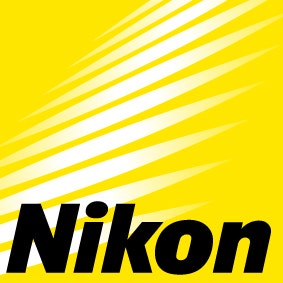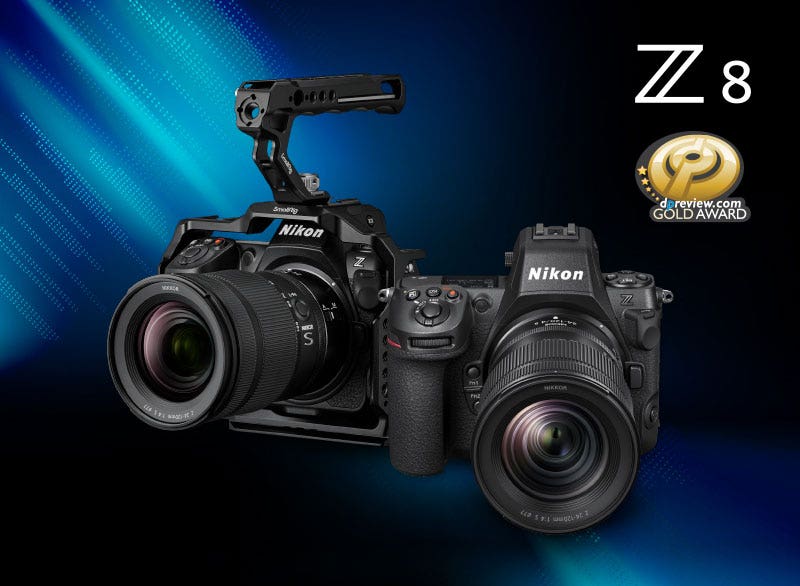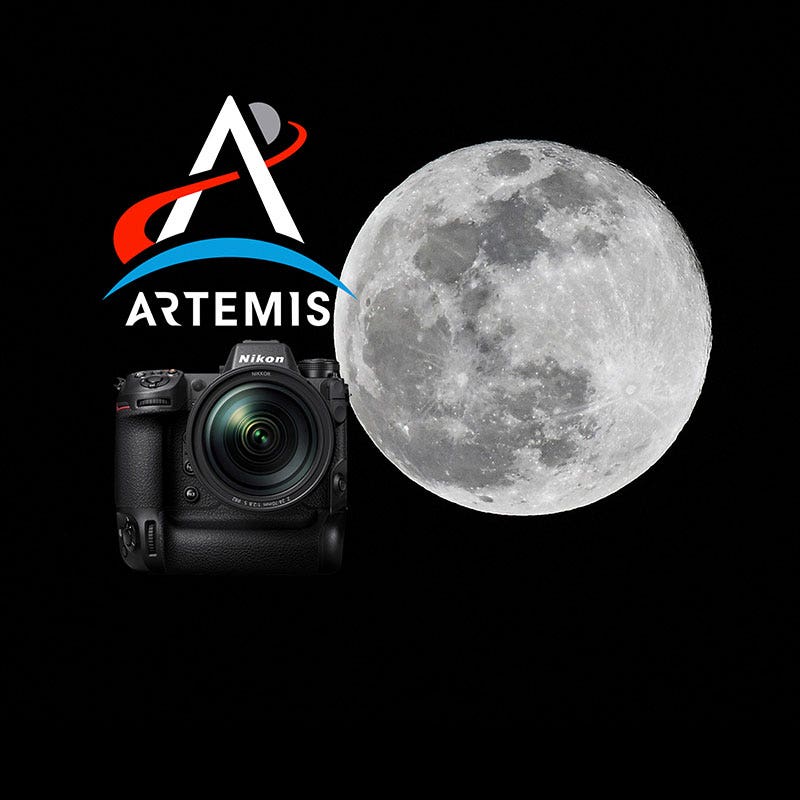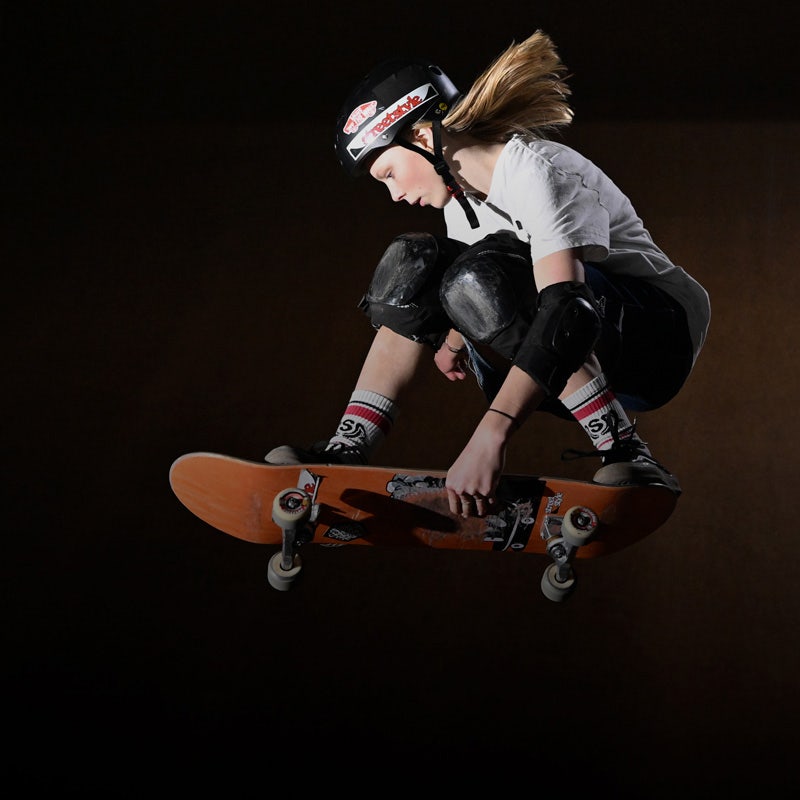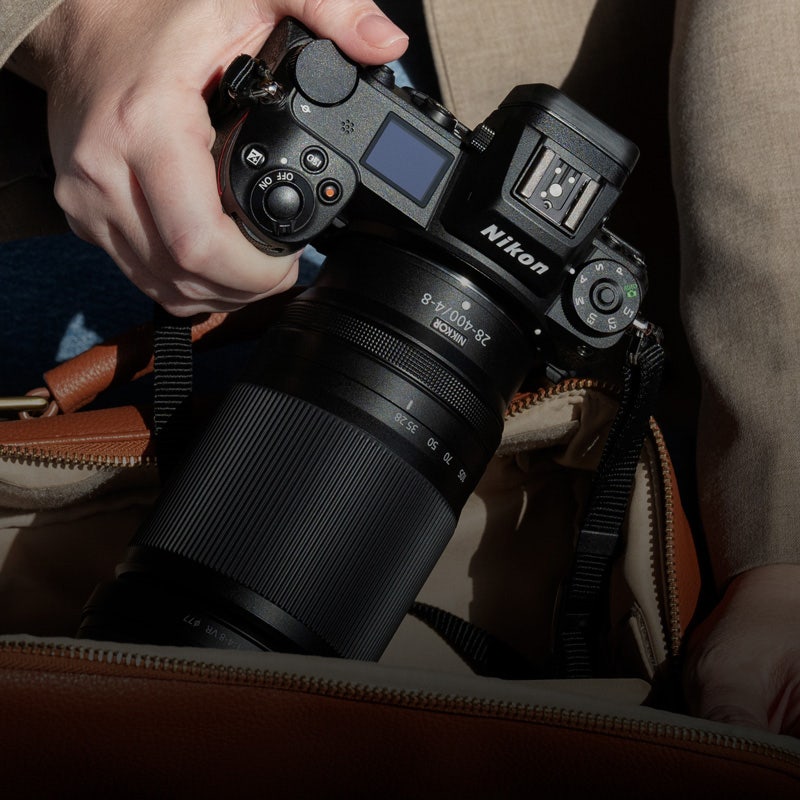

Learn & Explore - Z Series
Nikon Z 9: Unstoppable


Nikon Z 9: Unstoppable
The first camera in the Nikon Z mirrorless camera series to feature 3D-tracking and an integrated vertical grip, the Nikon Z 9 is geared towards professional photographers who require a powerful, reliable camera that provides high-resolution output for both still and video. Equipped with a unique stacked CMOS sensor with 45.7 effective megapixels, along with the new EXPEED 7 image-processing engine, Nikon’s flagship professional camera boasts many eye-popping advanced features that are also world firsts.


World’s largest[1] variety of subject detection range: Detects 9 subject types simultaneously
Responsiveness, speed, and precision are crucial for photographers who shoot fast action. Beyond a certain level, nailing peak action and decisive moments is as much about technology as it is about the photographer’s skill, and that is what the Z 9 promises to provide. Thanks to a breakthrough algorithm developed using deep-learning technology, it is armed with the ability to detect 9 different types of subjects: humans, dogs, cats, birds, cars, motorcycles, bicycles, trains, and aircraft[2]. This covers technical aspects like focusing and tracking, so that regardless of whether it’s sports, wildlife, high-speed vehicles, or even a model in motion, photographers can concentrate on getting the best composition at the best moment.




Human subjects: More than just eye and face detection
Eye and face detection have their limitations, especially in scenes filled with complex body movements such as gymnastics. That’s no issue on the Z 9, which can also detect the head and upper body of human subjects, ensuring persistent focus on them even if they turn away. Enhanced eye detection capabilities find the subject’s eyes even if their face is upside-down, and when they are wearing goggles or sunglasses. Great not just for sports, but also fashion portraits!


© Kenjiro Matsuo
Nikon Z 9/ NIKKOR Z 70-200mm f/2.8 VR S + Z TELECONVERTER TC-1.4x/ FL: 280mm/ Manual exposure (f/4, 1/1600 sec)/ ISO 6400/ WB: Preset manual
Animal detection: Full body, head, and eyes of dogs, cats, and even birds
The animal detection capabilities of the Z 9 include the full body, head, and eyes of dogs, cats, and birds. This means that you can leave the focusing to the camera even when photographing small but fast-moving animals such as birds, and concentrate on observing the animal and getting the best timing.
Vehicle detection: Motorcycles, cars, bicycles, trains, airplanes
The Z 9 detects cars, motorcycles, trains, bicycles, and airplanes (whole body, front, and cockpit). This makes it more convenient to shoot not just motorsports and stunt biking, but also railway and aviation scenes.


The ‘Auto’ AF subject detection option allows the simultaneous detection of the abovementioned 9 different subject types. The camera also uses information about the subject’s size, position, and defocus to select the main subject. For example, in a motorsport scene with the driver exiting the car, the camera would detect both the car and the human subject without the need to change modes.
If there are multiple subjects in the same frame, the selected subject can be changed using the multi-selector to track your intended subject. The same subject detection capabilities are available in video shooting mode.
The first Nikon mirrorless camera with 3D-tracking AF


Utilising mirrorless technology, the Z 9 conducts highly accurate autofocusing (AF) via image plane phase difference detection.
In Single-point AF mode, there are 493 possible AF points that cover a wide area of the image frame, allowing you to place precise focus on subjects near the image edges.
During still photography, the Dynamic AF mode, where the selected AF point is assisted by 8 other surrounding AF points to increase precision when shooting moving subjects, is also improved. There are now three sizes available: S, M, and L, allowing photographers to choose the size that works best for the specific scene and subject.
One noteworthy AF feature on the Z 9 is 3D-tracking, which detects the subject in the image frame and constantly shifts the focus point to track it. This well-received feature is a staple on Nikon’s DSLR cameras, and the Z 9 is the first mirrorless camera to incorporate it. This, combined with as many as 405 AF points in Auto-area AF mode, promises greater tracking precision than ever when combined with the intelligent algorithm based in deep learning technology.


© Kenjiro Matsuo
Nikon Z 9/ NIKKOR Z 70-200mm f/2.8 VR S/ FL: 200mm/ Manual exposure (f/2.8, 1/4000 sec)/ ISO 100/ WB: Daylight
High-speed shooting to capture high-speed moments: 1/32,000-second shutter speed, and up to 120 fps continuous shooting
When shooting unpredictable subjects, be it sports or wildlife, high-speed continuous shooting is necessary for catching those unexpected but inspiring moments. The Z 9 comes with a new High-Speed Frame Capture+[3] which offers two burst shooting modes. C120 mode shoots 11-megapixel images with AF/AE tracking at a shooting speed of up to 120 fps—large enough to make commercial A4-sized prints. C30 mode shoots 45-megapixel images with AF/AE tracking at up to 30 fps.
In high-speed continuous shooting mode, the fast writing speed of CFexpress Type B cards enable the Z 9 to shoot at more than 1000 frames[4] at approximately 20 fps with AF/AE tracking in JPEG Fine (L) or High-Efficiency RAW format.


© Kenjiro Matsuo
Nikon Z 9/ NIKKOR Z 120-300mm f/2.8E FL ED SR VR S/ FL: 300mm/ Manual exposure (f/2.8, 1/32000 sec)/ ISO 1600/ WB: Natural Light Auto
A high-speed shutter is necessary to freeze moments. The Z 9 is designed with an electronic shutter that achieves the least rolling shutter image distortion with the world’s fastest scan rate[5], thanks to Nikon’s powerful, unique newly developed stacked CMOS sensor and the new EXPEED 7 image-processing engine, which combined together ensure ultra-fast readout and processing.
Imagine: 120 fps continuous shooting, each frame at an ultra-fast shutter speed of 1/32,000 second. That means freezing moments that occur so instantaneously, they are impossible for your eyes to catch.
Blackout-free Real-Live Viewfinder that goes as bright as 3000cd/m2
The electronic viewfinder (EVF) on the Z 9 is an ultra-high-definition 3.69-million dot QUAD-VGA OLED display panel that achieves 100% coverage, providing a large, clear view of the scene with approximately 0.8x magnification.


The EVF is also the world’s brightest[6] among full frame mirrorless camera, being able to display up to 3000cd/m2. To put this in perspective, PC displays are usually around 300cd/m2, while HDR-compatible displays commonly go up to 1000cd/m2. Such brightness achieves a realism that is close to that of an optical viewfinder.
Called the “Real-Live Viewfinder”, the Z 9’s viewfinder is capable of true blackout-free display even during high-speed continuous shooting.
Prior to the Z 9, loss of view during continuous shooting was quite unavoidable on both DSLR and mirrorless cameras. On DSLR cameras, this was due to blackout during mirror-up movement; on conventional mirrorless cameras, manufacturers would repeat or skip frames to prevent “blackout”, which would in turn cause a split second’s lag in the subject movement.
However, Nikon’s Real-Live Viewfinder uses Nikon’s unique Dual-Stream technology, where the image data from the CMOS image sensor is processed separately in two “streams”: one for the EVF/monitor display, and another for image recording. The result is a truly blackout-free display, where you get a seamless, uninterrupted view of your subject’s movements all the way, allowing you to firmly capture picture-worthy moments!
Dual-Stream technology
Dual-Stream technology involves several large-capacity memory chip and high-speed processing circuits installed in the stacked area of the Z 9’s 45.7-megapixel stacked CMOS sensor, which allows it to achieve a still image readout that is around 12 times faster than on the Z 7II. The massive volume of data from two streams is read and processed simultaneously by the high-speed, high-performance new EXPEED 7 image-processing engine. The separate streams of processing make it possible to process the live view image to show the optimum exposure, regardless of the actual shoot settings.


Power-packed video: Record up to 125 minutes of 8K UHD 30p in-camera
Besides being a still-shooting powerhouse, the Z 9 also boasts video capabilities that would please professional video producers. These include 8K recording, which is increasingly necessary on production sets, and support for long continuous recording durations. In fact, at 125 minutes[7], the Z 9 has the world’s longest[8] 8K UHD 30p video internal recording time.
Recording high-quality, high-resolution video requires tremendous processing power which generates heat, and the potential for overheating limits the recording time on many cameras. However, the Z 9 overcomes this with efficient heat dissipation technology, making the most of the powerful EXPEED 7 image-processing engine to achieve high-quality video over longer shooting times.


Video recording modes on the Z 9
| File format | ProRes 422 HQ 10-bit | H.265 10-bit | H.265 8-bit | H.264 8-bit | Image area | |
|---|---|---|---|---|---|---|
| MOV | MOV | MOV | MP4 | |||
| SDR/N-Log | SDR/N-Log/HLG | SDR | SDR | |||
| YCbCr 4:2:2 | YCbCr 4:2:0 | YCbCr 4:2:0 | YCbCr 4:2:0 | |||
| 8K UHD (7680×4320) |
- | 30p/25p/24p | - | FX | - | |
| 4K UHD High Frame Rate (3840×2160) |
- | 120p/100p | - | FX | 2.3x crop |
|
| 4K UHD (3840×2160) |
60p/50p/30p/25p/24p | 60p/50p/30p/25p/24p | - | FX | DX crop |
|
| FHD High Frame Rate (1920×1080) |
120p/100p | 120p/100p | - | FX | 2.3x crop |
|
| FHD 1920×1080) |
60p/50p | 60p/50p/30p/25p/24p | 60p/50p/30p/25p/24p | FX | DX crop |
|
* Text in yellow indicates the modes that use full pixel readout over the image sensor area used for recording. For FX-format 4K UHD video, full pixel readout is used only for 30p/25p/24p recording.
The recording qualities supported at the time of product launch are as indicated above. N-Log and HDR recording are supported by the H.265 10-bit profile, which means that HDR video production is possible. Recording 4K UHD allows you to record in N-Log, in the ProRes 422 HQ 10-bit profile, and with high-quality 4:2:2 colour sampling. Need to capture high-resolution slow-motion footage? The Z 9 is the first Nikon camera to support full-frame High Frame Rate 4K UHD 120p recording. And if you decide to shoot in full-frame 4K UHD 30p/25p/24p, quality high-resolution 4K videos can be produced by oversampling from 8K.
That’s not all. Support for 8K RAW 60p 12-bit recording is planned in a future firmware update.


Synchro VR: Achieves up to 6 stops’ equivalent[9] image stabilisation
The new Synchro VR (Vibration Reduction) links the 5-axis in-camera VR and lens VR mechanisms for enhanced camera shake compensation, achieving an effect up to 6 shutter speed stops’ equivalent. This increases the chances of a sharp, steady shot especially during handheld shooting at long focal lengths, or with a slow shutter!
During video shooting, Synchro VR combines with the electronic VR system to increase the stabilisation effect, ensuring seamless, steady footage even for shots taken handheld while moving.


© Christian Ammann
Nikon Z 9/ NIKKOR Z MC 105mm f/2.8 VR S/ FL: 105mm/ Manual exposure (f/4, 1/20 sec)/ ISO 64/ WB: 5000K
Lenses compatible with Synchro VR (as of 28 October 2021)
- NIKKOR Z 70-200mm f/2.8 VR S (with firmware update)
- NIKKOR Z MC 105mm f/2.8 VR S
- NIKKOR Z 100-400mm f/4.5-5.6 VR S
Better portability: 20% smaller than the D6
Compared to the DSLR flagship D6, the Z 9 is about 20% smaller and weighs around 110g lighter. Z mount lenses also tend to be lighter than F mount lenses with the same focal length and maximum aperture, which leads to a significant overall weight reduction when used with a Z 9 body. This increases the overall agility for photographers who tend to handhold the camera for long durations.




* Weight includes battery and memory cards, and excludes the lens cap and shoe cover.
Outstanding flexibility: Innovative 4-axis vertical and horizontal tilting image monitor
The integrated vertical grip of cameras like the Z 9 offers greater ease and comfort when holding the camera vertically for portrait orientation shots, which are increasingly in demand especially with the rise of social media. In addition, the Z 9 also features Nikon’s first 4-axis vertical and horizontal tilting monitor. The monitor can be tilted upward, downward, left, and right during both horizontal shooting and vertical shooting (with the right hand holding the vertical grip).




Compared to conventional tilting and vari-angle monitors, the optical axis of the lens barely changes regardless of the direction that the 4-axis monitor is tilted. This makes it even easier to shoot from high and low angles from any camera holding position.
When the camera is in a vertical position, the display, including shooting information, automatically switches to a layout that is optimised for vertical shooting, making it easier to check the shoot settings. This promises to be a much-welcome feature, especially in a world where web content trends have led to the increasing popularity of vertical images and video.




Dual card slots that support CFexpress Type B
To ensure seamless recording of the massive amounts of data generated by 45MP/30 fps and 11MP/120 fps continuous shooting as well as 8K UHD 30p and 4K UHD 120p video, the Z 9 is equipped with two memory card slots that both support CFexpress Type B for high-speed writing.
Tough and highly reliable, with new mechanisms to prevent dust attachment to the sensor
The robust body of the Z 9 incorporates magnesium alloy, achieving durability and effective heat dissipation, and weather sealing on the buttons and dials provide it with dust- and drip-resistance equivalent to the D6. Considering the use of the camera in extremely cold conditions, the camera parts were reconsidered to improve resistance to cold, allowing smooth operation even at -10°C.




No mechanical shutter, no worries about shutter durability
The Z 9 was designed to be shutterless due to the high potential and performance of an electronic shutter system. Users can take full advantage of the high-speed continuous shooting and shoot as much as they want, without worrying about wear and tear to the mechanical shutter unit.
Keeping the dust away
To prevent dust from attaching to the image sensor, the Z 9 utilises dual coating on the optical filter in front of the CMOS sensor, and is the world’s first[10] mirrorless camera to do so. The dual coating features a conductive coat that keeps dust off, and fluorine coat that makes it easy to wipe off dust that does not fall off. A sensor shield mechanism closes over the sensor when the camera is powered off, protecting and preventing dust from entering when changing lenses.
New app and software to streamline professional workflows
Two new software applications were released alongside the Z 9.
The NX MobileAir smartphone app (in-app purchases apply) enables the fast, reliable transfer of images from the Z 9 to an FTP server via a smartphone, simply by connecting a USB cable from the Z 9 to the smartphone. 5G transmission is possible on 5G-enabled smartphones.
The NX Tether software, available for free, allows efficient tethered shooting, where users can check and preview images on their PCs during the shoot.
NX MobileAir


NX Tether


In summary: An Unstoppable system
As the flagship camera in Nikon’s mirrorless Z series, the Z 9 is packed with powerful features and specifications, many of which are world firsts. It has a high 45.7-megapixel resolution, speed, and a high-performance AF system and well-considered controls and user interfaces to support it all. The result is an outstanding camera that promises to capture unexpected, inspiring moments that weren’t possible before, regardless of whether you are a professional sports photojournalist or fashion photographer, or an advanced enthusiast shooting wildlife, trains, or aviation.
[1] Among mirrorless cameras based on Nikon research as of 28 October,2021
[2] Subject detection AF is available in the Wide-area AF (S) and (L) modes, Auto-area AF, 3D-tracking, and Target Tracking AF (video mode only) modes. Animals that resemble dogs, cats, and birds may also be detected.
[3] JPEG normal image quality only. Up to 4 seconds of continuous shooting is possible, and the number of frames that can be shot is less than that of high-speed continuous shooting. Continuous shooting speed may also be reduced depending on the write speed of the memory card.
[4] When using the NIKKOR Z 50mm f/1.8 S and a ProGrade Digital COBALT 1700R 325GB memory card. The actual continuous shooting speed and maximum number of shots depends on the writing speed of the memory card.
[5] Among mirrorless cameras equipped with image sensors over 30MP. Based on Nikon research as of 28 October 2021.
[6] Among mirrorless cameras, based on Nikon research as of 28 October 2021.
[7] When using the EN-EL18d Li-ion rechargeable battery at 23°C. From camera power on. CFexpress Type B cards are recommended for video recording due to their support for high-speed writing.
[8] Among mirrorless cameras, based on Nikon research as of 28 October 2021.
[9] Based on CIPA standards, when using the telephoto end of the NIKKOR Z 70-200mm f/2.8 VR S in NORMAL mode.
[10] Among mirrorless cameras, based on Nikon research as of 28 October 2021.
